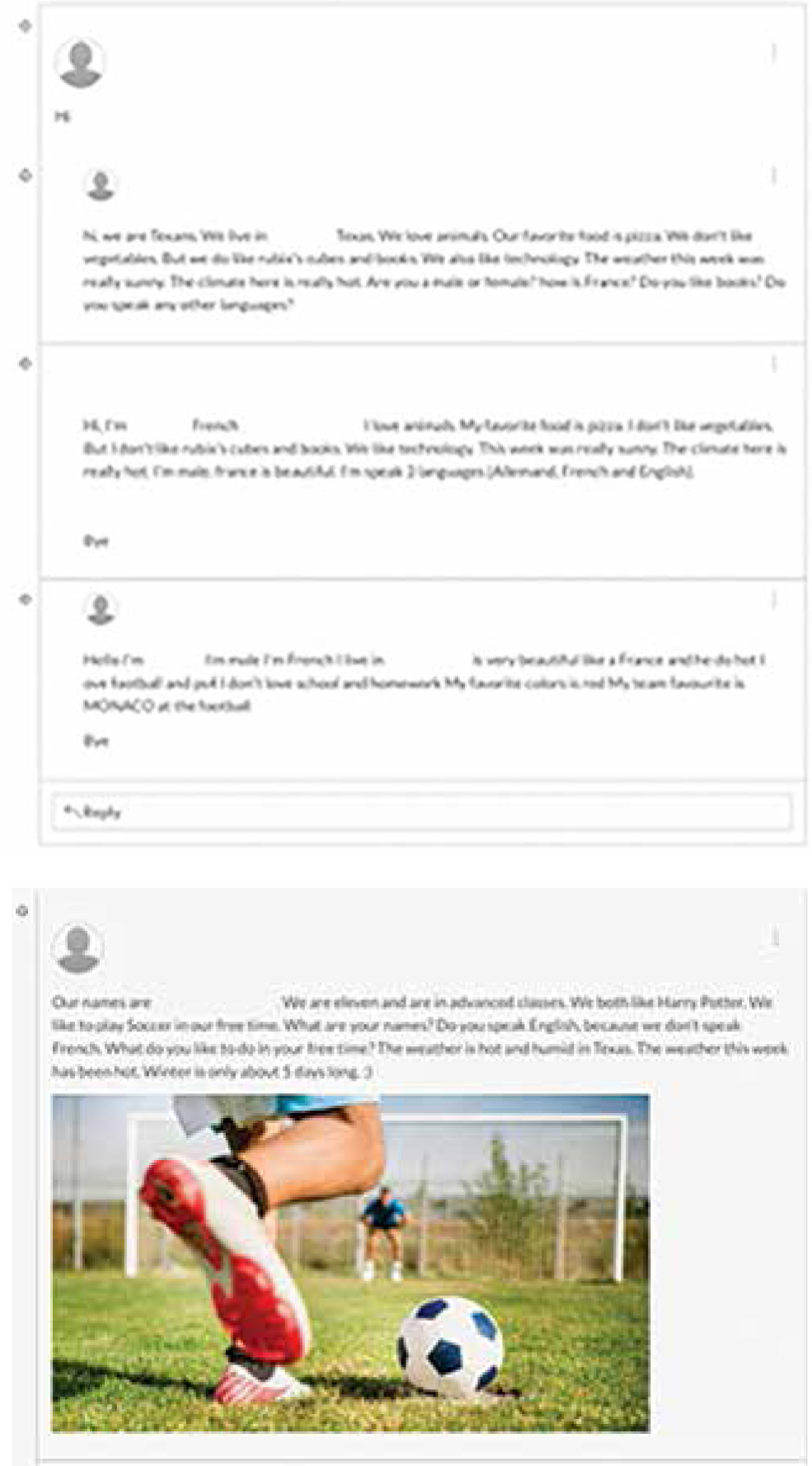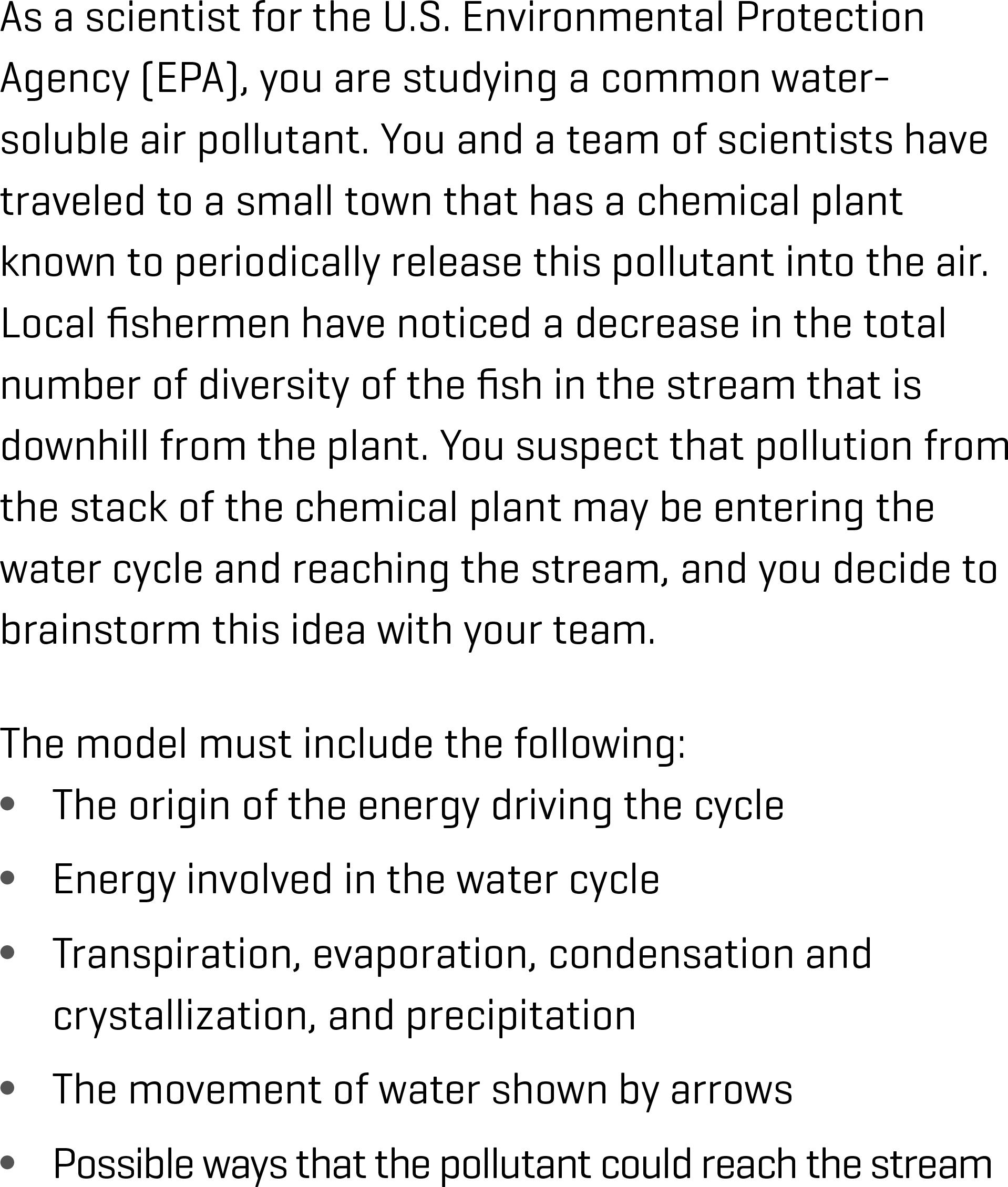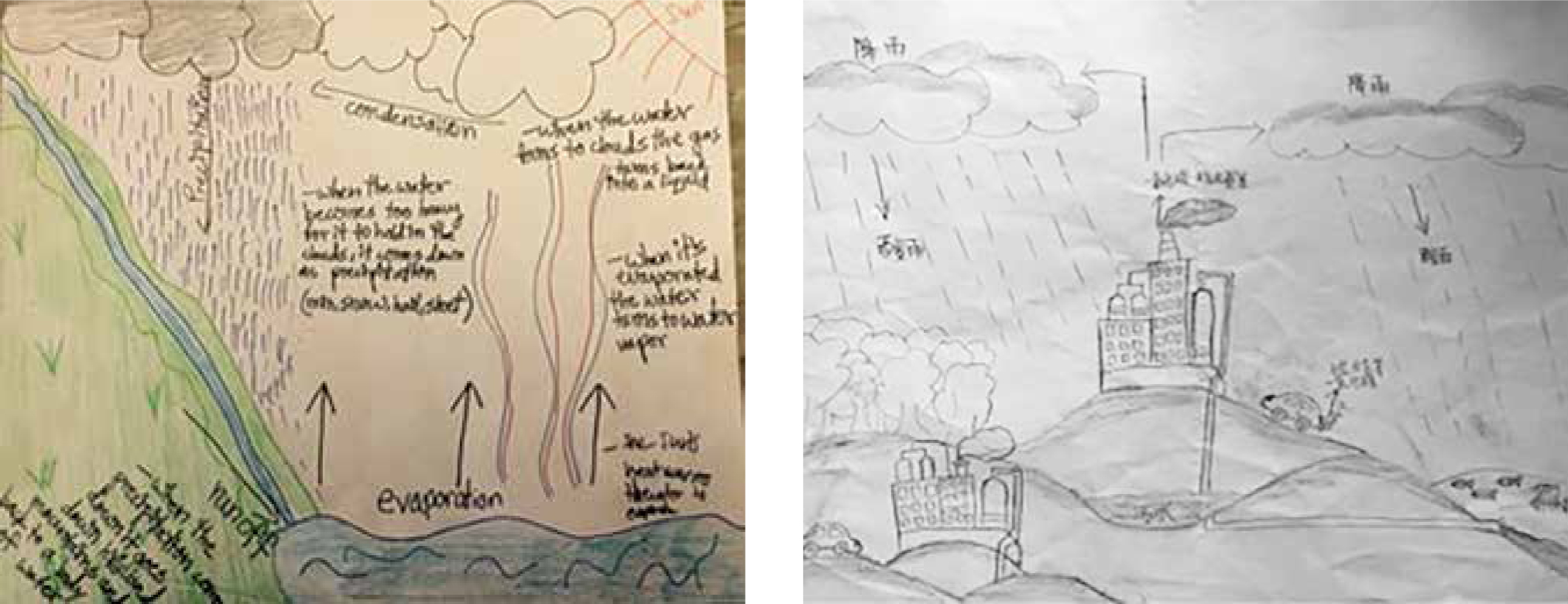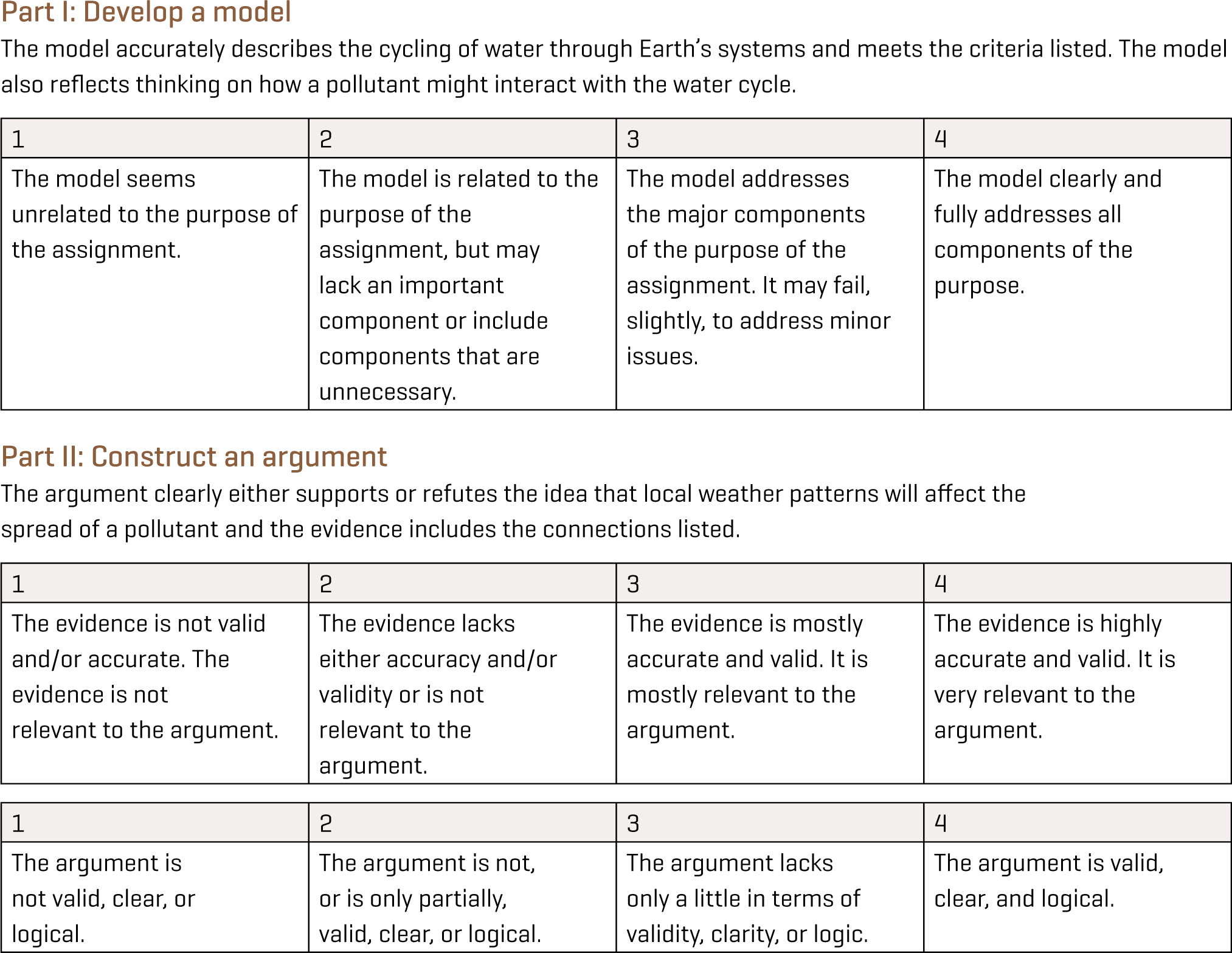Globalize Your Classroom
By ALEXANDRA OWENS AND REBECCA HITE
Employing global collaboration to develop student communication skills using the water cycle
As interconnections between diverse people across the world continue to grow, developing effective communication skills becomes even more important to fostering relationships and understandings. Communication skills are often lacking in students, according to educators and STEM workplace employers (Gray, Emerson, and MacKay 2005; Trilling and Fadel 2009). As a result, educators must search for strategies to improve students’ communication skills, while still aligning lessons to state and national standards (Bellanca and Stirling 2011; Brazell 2013).
Global collaboration projects that use Web 2.0 tools (video conferencing and online discussion boards) allow students to interact and communicate with peers in ways that are not possible in the traditional classroom setting. Given the distance between international classrooms, students can creatively use a variety of communication skills and technology to ask questions, explain key ideas, frame arguments with data, listen with understanding, and challenge claims; all of which are essential STEM communication skills (AAAS 1993; NGSS Lead States 2013; NRC 2012).
To help students enhance their communication skills in STEM, we introduced a 5E Technology- Enhanced Project Based Learning (TEPBL) global collaboration at the end of the school year as a three-week culminating project on the water cycle and weather. Students developed models describing the water cycle, illustrating the possible ways a pollutant may enter the water cycle, and creating an argument to support or refute the idea that local weather patterns may affect the spread of a pollutant. This topic addressed global commonalities that were essential to facilitate a relevant and active discussion.
Preparation
Prior to the start of the TEPBL, connection to a global partner (teacher/s and his/her classroom of students) is needed. We used the website ePals to find our global partners (see Resources for additional recommended sites). With this site, you create a user account and classroom profile with your collaboration interests, then search by content and grade level to locate a classroom that best suits your needs.
After sending messages about our project idea through the website to a dozen classrooms around the world, we quickly located partners in France and China who were interested in working with us. While other classrooms responded with initial interest, schedules or response times prevented us from moving forward. We exchanged email addresses with the teachers in France and China in order to share all of the TEPBL materials and establish a timeline to complete the project.
Once a partnership is established, an online platform for student communication should be selected. Technology constraints must be considered, especially firewalls or countries that forbid certain technology companies. For example, we learned that classrooms in China are unable to use Google. For TEPBL, we used Canvas, a free learning management system (LMS) (see Resources). It allows students to use a video camera, microphone, and screen sharing to interact with one another. Other free sites include Google Hangouts, Skype, and Piazza.
While lab safety is not a concern during this TEPBL, it is suggested that teachers review their district Internet safety protocol or the U.S. Department of Education’s “Cyber Safety for Schools Fact Sheet” (see Resources). Generally, students should not overshare identifying personal information such as full names, addresses, or birth dates.
Because students are communicating with those that may neither speak English as their first language nor share a common communication culture, they should carefully consider not only what words they use, but also their tone. Ask students if they have ever thought someone was angry or upset based on how a text message or email was worded. Allow students to brainstorm ways to ensure that their tone is what they intended. In a text interaction, our students determined that using emoticons and images helped get their message across because the language of images is universal.
During video interactions, explain to students that they should speak slowly, without using native slang, and without shouting. Students should also be reminded throughout the project to treat others as they would like to be treated, and that cyber bullying will not be tolerated. Many of these issues can be addressed by providing time to have class discussions about cross-cultural collaboration prior to the start of the project.
A great way to prepare students is with an Online Communication Exercise, as recommended by iEARN (see Resources). In this activity, student pairs sit with their backs to one another and pass written notes back and forth. As a class, discuss challenges with this form of communication and strategies to improve communication. Your partner teacher can also be a great additional resource to help navigate potential language barriers.
Once these norms of behavior are established, create groups of two or three students to work together in the same classroom. Small groups should then be partnered with two or three students in the global classroom. We decided, with the global classroom teachers, to create groups of similar gender composition for grouping purposes. Consider the needs of students who may require additional support or assistive technologies during group formation and group work. For example, an aide was present to type online posts, as needed, during the TEPBL.
Engage
At the start of the project, we asked students if the water cycle is the same around the world. Many of our students thought that it would be difficult to discuss the water cycle with someone in another part of the world because the water cycle was different outside of where they lived. Through this project, students quickly realized this is not the case.
During the first two days, students were introduced to their international group members and created discussion posts getting to know one another using text and images, bearing in mind that the questions are not personal (identifying or intrusive) by their cultural standards. We encouraged students to discuss local weather to tie into the prompt used for the TEPBL. All conversations can be seen by both teachers, and can be monitored as needed. In the classroom example that follows, we used the message board feature (Figure 1, p. 46).

Explore
Next, we presented to them the prompt shown in Figure 2 (Accelerate Learning 2017).

We challenged students in both classrooms to create an illustration or three-dimensional model of the water cycle and how this pollutant may reach the stream. We allowed students to conduct research, as needed, to explore how air pollutants may enter the water cycle. We provided a list of reputable websites for students to scaffold the research process (see websites for research in Resources), as well as extensive information on the water cycle, including diagrams in almost 40 languages. Students used classroom materials, such as cotton balls, yarn, and colored paper to draw or build their water cycle model. This model served as a draft and was used as a formative assessment to check for any misunderstandings prior to the next portion of the activity.
Explain
Once both groups have created their own draft models, ask students to share with their global partners and collaborate to create a single agreed-upon final model (Figure 3). For enhanced understanding and communication, ask students to include a photograph of their model as well as a video recording of students explaining their model to their global partners. Emphasize to your students that they should speak clearly and slow down their usual pace. If time zones allow, students may share their model in real time using a video conferencing platform such as Google Hangouts or Skype. In order to best monitor this interaction, conduct this conversation as a class, allowing each group time to share their work.

If the collaborative online platform allows, have students from both classrooms work collaboratively on one common model, such as using Google Slides. Due to our technology constraints with China, students used feedback and discussion to create a common model that was shared through photographs instead.
To further build connections, students discussed and compared local air pollution sources in their respective countries and communities. Questions students discussed in their groups included: What sources were similar or different? How may this impact how air pollutants enter the water cycle? This brought global awareness to this issue, and established common ground as students shared personal experiences from each location. Depending on the time zone of the global partner, this portion of the activity can take one or two sessions.
Elaborate
For this portion of the project we presented students the following prompt: Now that you have identified possible ways that the pollutant may be carried by the water cycle, your team would like to know if the local weather patterns will affect the spread of the pollutant.
Student groups brainstormed about their local weather patterns and air pollution sources through a series of discussion posts on Canvas using the following questions: How do the weather patterns in each location compare? Would they affect the spread of the pollutant differently? This included students researching their own location and comparing it to their global partner’s location.
Have students post their findings to their global partners, again with text and video recording. This discussion should highlight the similarities and differences between findings from their international peers. The teacher should assess these posts, prior to the next part of the project, to check for misunderstandings in communication or misconceptions in STEM content. Common misconceptions included the idea that the weather in each location was not the same, and that wind was the only way to spread a pollutant. Depending on the time zone of the global partner, this portion of the activity may take one or two sessions. At this point in the activity, the greatest challenge was continued engagement and response from global partners. E-mail communication with the teacher partner is crucial throughout to ensure projects come to completion.
Evaluate
Students used the Claim, Evidence, and Reasoning (CER) model to present their group findings. To conclude the project and assess students’ understanding, we provided the following prompt: Construct an argument to either support or refute the idea that local weather patterns will affect the spread of the pollutant. When supporting your argument, you should include: the connection between water and weather the relationship between the movement of air masses and weather
Teachers from each classroom should agree upon the best way to develop and assess the CER for their students. The CER response may be written collaboratively by both classrooms, by an individual classroom, within student groups, or by individuals. Students’ responses may be presented to the class to facilitate additional discussion. We used the rubric shown in Figure 4, p. 49, to evaluate students’ arguments.

Reflection
From the perspective of teachers who participated in this experience, TEPBL with global collaboration was an effective means of developing STEM communication skills. Students were initially concerned that they would not be able to understand their global partners, but multiple representations (text, photos, videos) and time for clarification (repeated interactions) enabled effective communication and collaborative learning to occur.
Teachers noted that their students were extremely interested in their global partners and wanted to learn more about them. Even within their own classrooms, students had to listen to one another in order to agree on what to post and how to speak during video recordings. Preparation, clear expectations regarding communication, and cultivation of relationships at the start of the project resulted in strong working relationships. Students took time to listen, collaborate, and share leadership roles. Teachers remarked that otherwise-reserved students found confidence and increased their participation during this experience.
When compared to other TEPBL experiences, participating teachers remarked that students were more interested during this experience because their group included students from another country. Our students could not wait to log on to see if their partners had replied to their postings. Because these students felt accountable to their group members, they were engaged and determined to create a high- quality final TEBPL product.
Lastly, students took their work more seriously because they had become friends with students from other countries and used information from each other to learn. For example, we observed that our students used emoticons and images to express themselves beyond the required photos and videos. This illustrates students’ collective desire to communicate and establish a shared knowledge base.
Conclusion
This project not only helped students further understand the water cycle and weather patterns, but also improved their communication skills through collaboration in STEM with students around the world. From our implementation of this TEPBL, we recommend that middle-grade STEM classrooms infuse global collaboration opportunities into TEPBL projects to enhance students’ engagement and communication in STEM content. Global collaboration can be infused into any classroom PBL with your STEM topic of choice. Through the connections created, students will not only develop communication skills needed to be successful students, but also be prepared for the challenges of working collaboratively within a diverse STEM workplace.
Connecting to the Next Generation Science Standards (NGSS Lead States 2013)
- The chart below makes one set of connections between the instruction outlined in this article and the <i>NGSS</i>. Other valid connections are likely; however, space restrictions prevent us from listing all possibilities.
- The materials, lessons, and activities outlined in the article are just one step toward reaching the performance expectation listed below.
Standard
MS-ESS2 Earth’s Systems
www.nextgenscience.org/dci-arrangement/ms-ess2-earths-systems
Performance Expectation
MS-ESS2-4. Develop a model to describe the cycling of water through Earth’s systems driven by energy from the Sun and the force of gravity.
Connections to the Common Core State Standards (NGAC and CCSSO 2010)
ELA
CCSS.ELA-LITERACY.W.6-8.1. Write arguments to support claims with clear reasons and relevant evidence.
CCSS.ELA-LITERACY.SL.6-8.1. Engage effectively in a range of collaborative discussions.


